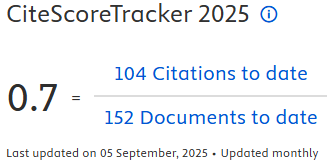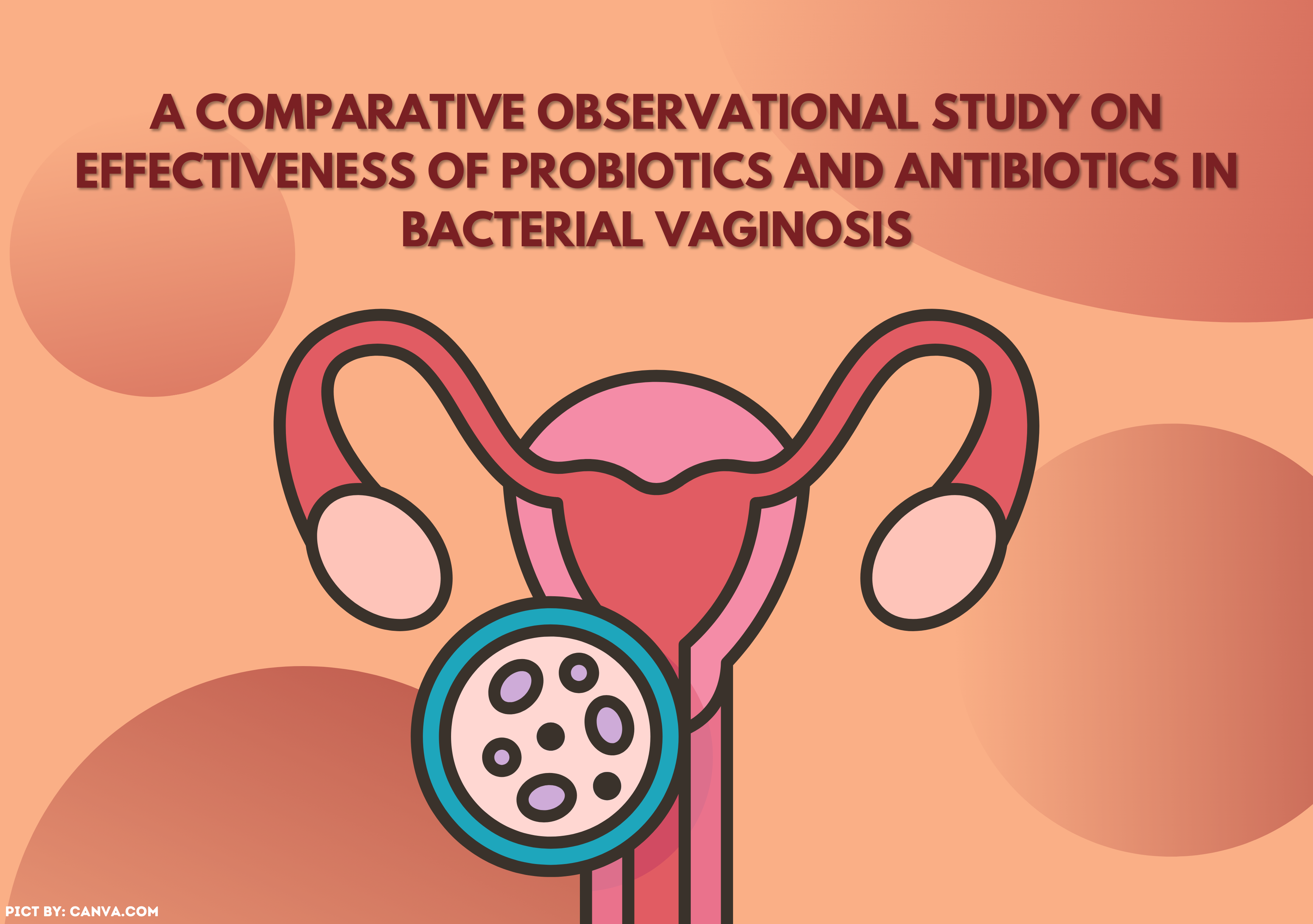SCREEN TIME ON WEEKDAY AND WEEKEND AMONG HEALTH COLLEGE STUDENTS AND THE CORRELATION TO NUTRITIONAL STATUS

Downloads
Introduction: The prevalence of obesity in Indonesia reached 21.8% in 2018 and increased by 6.4% compared to 2013. Low physical activity is known as a risk factor of obesity. College students’ activities are closely related to use of screen time. Aims: To identify the activities of screen time for assignments and non-assignments on weekdays and weekends among college student and analyze its relationship with body mass index (BMI). Methods: This study was conducted in 2018 with a cross sectional design among undergraduate students at the Faculty of Public Health, Universitas Airlangga, Indonesia, conducted in 2018. The screen time questionnaire was adapted from Sedentary Behavior Questionnaire. The correlation between screen time duration and BMI was analysed by Spearman test. Results: The female subjects were dominant (81.1%) and 28.4% of subjects as overweight-obese. The screen time duration in non-assignment activity on weekends has a positive correlation with the nutritional status of health college students (p 0.000, r 0.49), particularly duration of social networking sites and listening to music were more significant in obese than normal. The use of smartphones takes a high part, approximately 4 hours 20 minutes both on weekdays and on weekends. Conclusion: The screen time duration in non-assignment activity on weekend was associated to nutritional status of health college students. Health college students are encouraged to reduce screen time for non-assignment activities on weekends and to use wisely several smartphone applications or social networking sites to control body weight and achieve a balanced nutritional status.
Alley, S., Wellens, P., Schoeppe, S., de Vries, H., Rebar, A.L., Short, C.E., Duncan, M.J. and Vandelanotte, C., 2017. Impact of increasing social media use on sitting time and body mass index. Health Promotion Journal of Australia : Official Journal of Australian Association of Health Promotion Professionals, 28(2), pp.91–95. https://doi.org/10.1071/HE16026
Atlantis, E. and Baker, M., 2008. Obesity Effects on Depression: Systematic Review if Epidemiological Studies. International Journal of
Obesity, 32, pp.881–891. https://doi.org/10.1038/ijo.2008.54
Avery, A., Anderson, C. and McCullough, F., 2017. Associations between children’s diet quality and watching television during meal or snack consumption: A systematic review. Maternal & Child Nutrition, 13(4). https://doi.org/10.1111/mcn.12428
Berenson, G.S. and Bogalusa Heart Study Group, 2012. Health Consequences of Obesity. Pediatric Blood Cancer, 58(1), pp.117–121. https://doi.org/10.1002/pbc.23373
Boo, N.Y., Chia, G.J.Q., Wong, L.C., Chew, R.M., Chong, W. and Loo, R.C.N., 2010. The prevalence of obesity among clinical students in a Malaysian medical school. Singapore Medical Journal, 51(2), pp.126–132.
Breitenbach, Z., Raposa, B., Szabó, Z., Polyák, É., Szűcs, Z., Kubányi, J. and Figler, M., 2016. Examination of Hungarian college students’ eating habits, physical activity and body composition. European Journal of Integrative Medicine, 8(S2), pp.13–17. https://doi.org/10.1016/j.eujim.2016.11.007
Chin, S.O., Keum, C., Woo, J., Park, J., Choi, H.J., Woo, J. and Rhee, S.Y., 2016. Successful weight reduction and maintenance by using a smartphone application in those with overweight and obesity. Scientific Reports, 6(1), pp.1–8. https://doi.org/10.1038/srep34563
Chinapaw, M.J.M., Proper, K.I., Brug, J., van Mechelen, W. and Singh, A.S., 2011. Relationship between young peoples’ sedentary behaviour and biomedical health indicators: a systematic review of prospective studies. Obesity Reviews : an Official Journal of the International Association for the Study of Obesity, 12(7), pp.e621--32. https://doi.org/10.1111/j.1467-789X.2011.00865.x
Coon, K.A. and Tucker, K.L., 2002. Television and children’s consumption patterns. Minerva Pediatrica, 54(5), pp.423–436.
Deforche, B., Van Dyck, D., Deliens, T. and De Bourdeaudhuij, I., 2015. Changes in weight, physical activity, sedentary behaviour and dietary intake during the transition to higher education: a prospective study. International Journal of Behavioral Nutrition and Physical Activity, [online] 12(1), p.16. https://doi.org/10.1186/s12966-015-0173-9
Deliens, T., Deforche, B., De Bourdeaudhuij, I. and Clarys, P., 2015. Determinants of physical activity and sedentary behaviour in university students: a qualitative study using focus group discussions. BMC Public Health, 15(1), pp.1–9. https://doi.org/10.1186/s12889-015-1553-4
Eka, E., Ticoalu, S.H.. and Wongkar, D., 2013. The Prevalence of Obesity in Students of the Faculty of Medicine, University of Sam Ratulangi, Class of 2011. Jurnal Biomedik (Jbm), 4(3), pp.83–92. https://doi.org/10.35790/jbm.4.3.2012.1218
Ekelund, U., Brage, S., Besson, H., Sharp, S. and Wareham, N.J., 2008. Time spent being sedentary and weight gain in healthy adults: reverse or bidirectional causality? The American Journal of Clinical Nutrition, 88(3), pp.612–617. https://doi.org/10.1093/ajcn/88.3.612
Farapti, F; Sari, A.N., Fadilla, C., Issa, Z.M., 2024. Association between taste sensitivity, taste preference, and obesity: study of healthy snacks in children aged 9–14 years. Food Production, Processing and Nutrition, 6(1), pp.37-47 https://doi.org/10.1186/s43014-023-00199-0
Furqonia, A.W., Farapti, F., Notobroto, H.B., 2023. Is excess sodium intake a risk factor for overweight?; A Systematic review. Amerta Nutrition, 7(3), pp.459-467. https://doi.org/10.20473/amnt.v7i3.2023.459-467
Ghobadi, S., de Zepetnek, J.O.T., Hemmatdar, Z., Bellissimo, N., Barati, R., Ahmadnia, H., Salehi-Marzijarani, M. and Faghih, S., 2018. Association between overweight/obesity and eating habits while watching television among primary-school children in the city of Shiraz, Iran. Public Health Nutrition, 21(3), pp.571–579. https://doi.org/10.1017/S1368980017003251
Gudegowda, K.S., Vengatesan, S. and Sobagiah, R.T., 2018. Prevalence of overweight and obesity among medical college students, Bengaluru. International Journal Of Community Medicine And Public Health, [online] 5(5 SE-Original Research Articles), pp.1881–1886. https://doi.org/10.18203/2394-6040.ijcmph20181692
Hamam, F.A., Eldalo, A.S., Alnofeie, A.A., Alghamdi, W.Y., Almutairi, S.S. and Badyan, F.S., 2017. The association of eating habits and lifestyle with overweight and obesity among health sciences students in Taif University, KSA. Journal of Taibah University Medical Sciences, 12(3), pp.249–260. https://doi.org/10.1016/j.jtumed.2016.12.001
Harriger, J. and Thompson, K., 2012. Psychological Consequences of Obesity: Weight Bias and Body Image in Overweight and Obese Youth. International Review of Psychiatry, 24(3), pp.247–253. https://doi.org/10.3109/09540261.2012.678817
Kandinasti, S. and Farapti, F., 2019. The Different Intake of Energy and Macronutrient on Weekdays and Weekend among Adolescent in Urban City. Executive Editor, 10(3), p.388. https://doi.org/10.5958/0976-5506.2019.00527.8
Kenney, E.L. and Gortmaker, S.L., 2017. United States adolescents’ television, computer, videogame, smartphone, and tablet use: associations with sugary drinks, sleep, physical activity, and obesity. The Journal of Pediatrics, 182, pp.144–149. https://doi.org/10.1016/j.jpeds.2016.11.015
Kishi, S., Armstrong, A.C., Gidding, S.S., Colangelo, L.A., Venkatesh, B.A., Jacobs, D.R., Carr, J.J., Terry, J.G., Liu, K. and Goff, D.C., 2014. Association of obesity in early adulthood and middle age with incipient left ventricular dysfunction and structural remodeling: the CARDIA study (Coronary Artery Risk Development in Young Adults). JACC: Heart Failure, 2(5), pp.500–508. https://doi.org/10.1016/j.jchf.2014.03.001
Komlos, J., Breitfelder, A. and Sunder, M., 2009. The transition to post-industrial BMI values among US children. American Journal of Human Biology : the Official Journal of the Human Biology Council, 21(2), pp.151–160. https://doi.org/10.1002/ajhb.20806
Luppino, F.S., de Wit, L.M., Bouvy, P.F., Stijnen, T., Cuijpers, P., Penninx, B.W.J.H. and Zitman, F.G., 2010. Overweight, obesity, and depression: a systematic review and meta-analysis of longitudinal studies. Archives of General Psychiatry, 67(3), pp.220–229. https://doi.org/10.1001/archgenpsychiatry.2010.2
Ministry of Health, 2018. Report and Basic Health Research in 2018. Jakarta: Balitbangkes.
Mitchell, J.A., Rodriguez, D., Schmitz, K.H. and Audrain-McGovern, J., 2013. Greater screen time is associated with adolescent obesity: a longitudinal study of the BMI distribution from Ages 14 to 18. Obesity (Silver Spring, Md.), 21(3), pp.572–575. https://doi.org/10.1002/oby.20157
Mithra, P., Unnikrishnan, B., Thapar, R., Kumar, N., Hegde, S., Mangaldas Kamat, A., Kulkarni, V., Holla, R., Darshan, B.B. and Tanuj, K., 2018. Snacking behaviour and its determinants among college-going students in coastal South India. Journal of Nutrition and Metabolism, 2018, 6785741 https://doi.org/10.1155/2018/6785741
Murray, M., Maras, D. and Goldfield, G.S., 2016. Excessive time on social networking sites and disordered eating behaviors among undergraduate students: Appearance and weight esteem as mediating pathways. Cyberpsychology, Behavior, and Social Networking, 19(12), pp.709–715. https://doi.org/10.1089/cyber.2016.0384
Ogden, C.L., Carroll, M.D., Kit, B.K. and Flegal, K.M., 2012. Prevalence of obesity and trends in body mass index among US children and adolescents, 1999-2010. JAMA, 307(5), pp.483–490. https://doi.org/10.1001/jama.2012.40
Peltzer, K., Pengpid, S., Samuels, T.A., Özcan, N.K., Mantilla, C., Rahamefy, O.H., Wong, M.L. and Gasparishvili, A., 2014. Prevalence of overweight/obesity and its associated factors among university students from 22 countries. International Journal of Environmental Research and Public Health, 11(7), pp.7425–7441. https://doi.org/10.3390/ijerph110707425
Puspikawati, S.I., Farapti, F., Kandinasti, S., Asna, A.F., 2024. Factors associated with weight gain during weekend day among adolescents in urban city: A Case control study. Malaysian Journal of Medicine and Health Sciences, 20(2), pp.114-121. https://doi.org/10.47836/mjmhs.20.2.16
Reilly, J.J. and Kelly, J., 2011. Long-Term Impacts of Overweight and Obesity in Childhood and Adolescence in Morbidity and Premature Mortality in Adulthood: Systematic Review. International Journal of Obesity, 35(7), pp.891–898. https://doi.org/10.1038/ijo.2010.222
Rosenberg, D.E., Norman, G.J., Wagner, N., Patrick, K., Calvas, K.J., and Sallis, J.F., 2010. Reability and validity of the Sedentary Behaviour Questionnaire (SBQ) for adults. Journal of Physical Activity and Health, 7(6):697-705. https://doi.org/10.1123/jpah.7.6.697
Russo, C., Russo, A., Gulino, R., Pellitteri, R. and Stanzani, S., 2017. Effects of different musical frequencies on NPY and ghrelin secretion in the rat hypothalamus. Brain Research Bulletin, 132, pp.204–212. https://doi.org/10.1016/j.brainresbull.2017.06.002
Sampasa-Kanyinga, H., Chaput, J.-P. and Hamilton, H.A., 2015. Associations between the use of social networking sites and unhealthy eating behaviours and excess body weight in adolescents. The British Journal of Nutrition, 114(11), pp.1941–1947. https://doi.org/10.1017/S0007114515003566
Sogari, G., Velez-Argumedo, C., Gómez, M.I. and Mora, C., 2018. College students and eating habits: A study using an ecological model for healthy behavior. Nutrients, 10(12), p.1823. https://doi.org/10.3390/nu10121823
Stroebele, N. and de Castro, J.M., 2006. Listening to music while eating is related to increases in people’s food intake and meal duration. Appetite, 47(3), pp.285–289. https://doi.org/10.1016/j.appet.2006.04.001
World Health Organization, 2016. Strategic Action Plan to reduce the Double Burden of Malnutrition in the South-East Asia Region 2016-2025. India: WHO-SEAR.
Yoo, J.-S., Chin, J.-H., Kim, M.-J. and Jang, K.-J., 2008. College students’ dietary behavior, health-related lifestyles and nutrient intake status by physical activity levels using international physical activity questionnaire (IPAQ) in Incheon area. Journal of Nutrition and Health, 41(8), pp.818–831.
Copyright (c) 2025 The Indonesian Journal of Public Health

This work is licensed under a Creative Commons Attribution-NonCommercial-ShareAlike 4.0 International License.
- The authors agree to transfer the transfer copyright of the article to The Indonesian Journal of Public Health effective if and when the paper is accepted for publication.
- Authors and other parties are bound to the Creative Commons Attribution-NonCommercial-ShareAlike 4.0 International License for the published articles, legal formal aspect of journal publication accessibility refers to Creative Commons Attribution-NonCommercial-ShareAlike 4.0 International License (CC BY-NC-SA), implies that:
- Attribution ” You must give appropriate credit, provide a link to the license, and indicate if changes were made. You may do so in any reasonable manner, but not in any way that suggests the licensor endorses you or your use.
- NonCommercial ” You may not use the material for commercial purposes.
- ShareAlike ” If you remix, transform, or build upon the material, you must distribute your contributions under the same license as the original.































